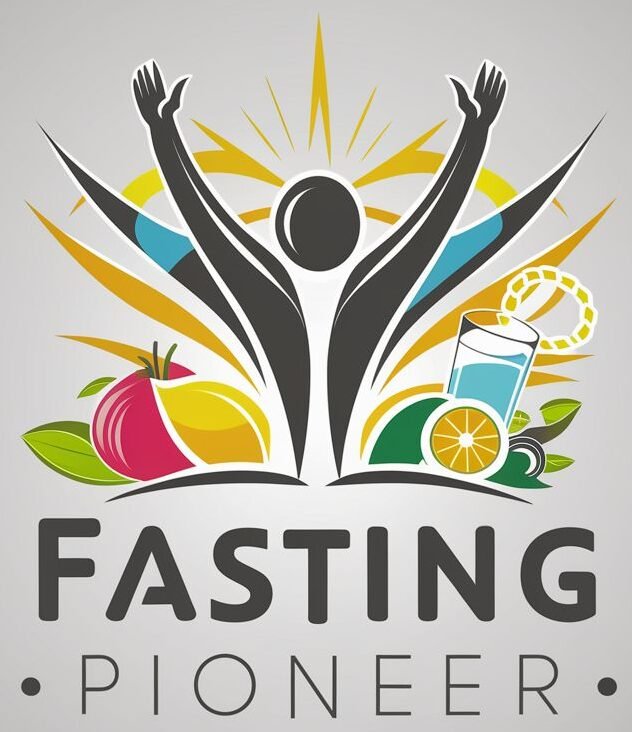In the world of fasting, there are various methods and techniques that people employ to achieve their desired health and wellness goals. One such approach is dry fasting, which involves abstaining from both food and water for a specific period of time. However, it is vital to understand the key differences between dry fasting and other types of fasting in order to make an informed decision about which method may be right for you. By examining the different types of fasting and their effects on the body, you can gain a better understanding of the pros and cons of each, ultimately leading to a more personalized fasting experience. So, let’s explore the world of fasting and discover which path may best suit your needs.
Dry Fasting
Dry fasting is a type of fasting that involves abstaining from both food and water for a certain period of time. Unlike other fasting methods that allow for the consumption of water or certain liquids, dry fasting strictly prohibits any intake of fluids. This form of fasting is believed to have been practiced for centuries by various cultures and is often associated with religious traditions and spiritual purification. The purpose of dry fasting can vary, with some individuals using it as a means of detoxification, weight loss, or spiritual discipline.
Different Approaches to Dry Fasting
There are two main approaches to dry fasting: the absolute dry fast and the soft dry fast.
The absolute dry fast is the strictest form of dry fasting, where no contact with water is allowed in any form. This means no showering, brushing teeth, or even coming into contact with water externally. The duration of an absolute dry fast is usually limited to no more than 24 hours due to the potential risks and challenges associated with complete dehydration.
On the other hand, the soft dry fast allows for minimal contact with water. It permits external use of water for personal hygiene, such as showering or washing hands and face. However, ingestion of water or any other liquids is still strictly prohibited. Soft dry fasting is considered to be less extreme compared to absolute dry fasting and can be practiced for longer durations, ranging from 24 hours to several days.
Duration of Dry Fasts
The duration of dry fasts can vary depending on an individual’s goals and physical condition. While some people may opt for shorter durations, such as a 24-hour dry fast, others may choose to extend it to several days. It is important to note that dry fasting should not be attempted for extended periods without proper guidance and preparation, as it can lead to severe dehydration and other health complications.
Intermittent Fasting
Intermittent fasting is a dietary approach that involves cycling between periods of fasting and eating. Unlike dry fasting, intermittent fasting allows for the consumption of water and other non-caloric beverages during the fasting period. The purpose of intermittent fasting is not only to restrict calorie intake but also to optimize metabolic health and promote weight loss.
Different Types of Intermittent Fasting
There are several popular methods of intermittent fasting, including the 16/8 method, 5:2 diet, and alternate-day fasting.
The 16/8 method involves fasting for 16 hours per day and restricting eating to an 8-hour window. This can be achieved by skipping breakfast and having lunch as the first meal of the day, followed by dinner as the final meal of the day.
The 5:2 diet involves eating normally for five days of the week and restricting calorie intake to around 500-600 calories on the remaining two days. These two fasting days can be consecutive or non-consecutive, depending on personal preference.
Alternate-day fasting, as the name suggests, involves fasting every other day. On fasting days, calorie intake is typically limited to around 500-600 calories.
Benefits of Intermittent Fasting
Intermittent fasting has gained popularity due to its potential health benefits. It has been associated with improved insulin sensitivity, reduced inflammation, and enhanced autophagy, a cellular process that helps remove damaged cells and promote regeneration. Additionally, intermittent fasting may facilitate weight loss by promoting fat burning and reducing calorie intake.

Water Fasting
Water fasting is a type of fasting that involves abstaining from solid foods and only consuming water. Unlike dry fasting, water fasting allows for the consumption of fluids, providing hydration and aiding in the body’s detoxification processes. Water fasting is often practiced for its potential health benefits and is believed to help cleanse the body and promote healing.
Duration of Water Fasts
The duration of water fasts can vary depending on individual goals and health conditions. Some people may choose to undertake shorter water fasts of 24 to 72 hours, while others may opt for more extended periods ranging from several days to weeks. Longer water fasts should be conducted under the supervision of a healthcare professional to monitor electrolyte balance and ensure safety.
Benefits of Water Fasting
Water fasting is believed to have various health benefits. It can promote autophagy, the body’s natural process of cellular repair and regeneration. Additionally, water fasting may enhance mental clarity, improve digestion, and boost the immune system. It is often used as a means of jump-starting weight loss and detoxification.
Potential Risks and Precautions
While water fasting can be beneficial, it is important to approach it with caution and under proper guidance. Extended water fasts can lead to electrolyte imbalances, muscle loss, and nutrient deficiencies. Individuals with certain medical conditions, such as diabetes or eating disorders, should consult a healthcare professional before attempting a water fast. It is crucial to listen to your body’s signals and break the fast gradually to avoid refeeding syndrome and digestive discomfort.
Juice Fasting
Juice fasting is a type of fasting that involves consuming only juices from fruits or vegetables while avoiding solid foods. This form of fasting allows for the intake of essential nutrients, vitamins, and minerals while giving the digestive system a break.
Different Approaches to Juice Fasting
There are different approaches to juice fasting, with some individuals opting for fruit juices and others choosing vegetable juices. Fruit juices provide natural sugars and can be more palatable, while vegetable juices offer a higher concentration of nutrients and are often lower in sugar. Some people may also combine fruit and vegetable juices to achieve a balance of nutrients during a juice fast.
Benefits of Juice Fasting
Juice fasting can provide the body with a concentrated dose of vitamins, minerals, and antioxidants while still allowing the digestive system to rest. It is often used as a method of detoxification and may help improve digestion, boost energy levels, and support overall well-being. Juice fasting can also aid in weight loss by reducing calorie intake and improving satiety.
Potential Risks and Precautions
While juice fasting can be beneficial, it is important to consider potential risks and precautions. Juices, particularly fruit juices, can be high in natural sugars, which may have negative effects on blood sugar levels and dental health. It is essential to choose fresh, organic juices and vary the types of fruits and vegetables to ensure a balanced nutrient intake. Individuals with certain medical conditions, such as diabetes or gastrointestinal disorders, should consult with a healthcare professional before attempting a juice fast.

Comparison: Dry Fasting vs. Intermittent fasting
When comparing dry fasting to intermittent fasting, several key differences arise in terms of approach and duration.
Difference in Approach and Duration
Dry fasting involves abstaining from both food and water, while intermittent fasting allows for the consumption of water or non-caloric beverages. Dry fasting is typically practiced for shorter durations, ranging from 24 hours to several days, due to the challenges and potential risks associated with complete dehydration. On the other hand, intermittent fasting can be practiced on a daily basis or for longer periods of time, depending on the chosen method.
Impact on Weight Loss and Metabolism
Both dry fasting and intermittent fasting can contribute to weight loss. Dry fasting may lead to rapid initial weight loss due to the depletion of glycogen stores and reduced water retention. However, this weight loss is primarily attributed to fluid loss and can be quickly regained once normal eating resumes. Intermittent fasting, especially methods that involve a calorie deficit, can facilitate sustained weight loss by promoting a consistent calorie deficit and enhancing fat burning.
Effects on Autophagy and Detoxification
Dry fasting is believed to promote autophagy, the cellular process of repair and regeneration, to a greater extent than intermittent fasting. The absence of water intake during dry fasting triggers a more profound cellular response. However, intermittent fasting also promotes autophagy, although to a lesser degree. Both fasting methods can aid in the body’s detoxification processes by allowing the elimination of waste products and supporting overall cellular health.
Potential Health Risks and Precautions
Dry fasting carries a higher risk of dehydration and electrolyte imbalances compared to intermittent fasting. It should only be attempted under proper supervision and for limited durations. Intermittent fasting, when practiced responsibly, is considered safe for healthy individuals. However, individuals with certain medical conditions, such as diabetes or eating disorders, should consult a healthcare professional before starting any fasting regimen.
Comparison: Dry Fasting vs. Water Fasting
When comparing dry fasting to water fasting, there are notable differences in approach, duration, and effects on the body.
Difference in Approach and Duration
Dry fasting involves abstaining from both food and water, while water fasting allows for the consumption of water. This key difference has a significant impact on hydration levels and the body’s response to fasting. Dry fasting is typically practiced for shorter durations due to the potential risks of dehydration, while water fasting can be conducted for longer periods, under appropriate medical supervision.
Effects on Autophagy and Detoxification
Both dry fasting and water fasting can promote autophagy and support the body’s detoxification processes. Dry fasting triggers a more significant autophagic response due to the absence of water intake, whereas water fasting can still stimulate autophagy to a certain extent. Both methods can aid in the elimination of toxins and waste products and improve cellular health.
Impact on Hydration and Electrolyte Balance
One of the crucial differences between dry fasting and water fasting is the impact on hydration levels. Dry fasting, by forbidding water intake, can lead to rapid dehydration. This can have adverse effects on the body’s electrolyte balance and overall well-being. Water fasting, on the other hand, allows for hydration and replenishment of vital fluids, reducing the risk of dehydration.
Potential Health Risks and Precautions
Dry fasting carries a higher risk of dehydration, electrolyte imbalances, and potential health complications compared to water fasting. It should only be undertaken under professional guidance and for limited durations. Water fasting, while generally safe for healthy individuals, should be approached with caution for longer periods and requires close monitoring of hydration and electrolyte levels, especially in individuals with pre-existing medical conditions.
Comparison: Dry Fasting vs. Juice Fasting
Comparing dry fasting to juice fasting reveals key differences in approach, duration, and nutritional intake.
Difference in Approach and Duration
Dry fasting involves abstaining from both food and water, while juice fasting allows for the consumption of juices from fruits or vegetables. This difference in approach makes dry fasting more extreme and challenging in terms of hydration and overall bodily response. Dry fasting is typically practiced for shorter durations, ranging from 24 hours to several days, while juice fasting can be conducted for longer periods under appropriate nutritional guidance.
Nutritional Intake During Fasting
One significant difference between dry fasting and juice fasting is the intake of nutrients. Dry fasting restricts the intake of both calories and water, providing no nutritional sustenance. On the other hand, juice fasting allows for the consumption of juices, which can provide essential vitamins, minerals, and antioxidants during the fasting process.
Impact on Detoxification and Weight Loss
Both dry fasting and juice fasting can contribute to detoxification and weight loss, albeit through different mechanisms. Dry fasting may promote a more intense detoxification response due to the absence of water intake, while juice fasting can still facilitate detoxification by providing nutrient-rich fluids. In terms of weight loss, dry fasting may lead to rapid initial weight loss primarily due to fluid loss, while juice fasting can promote weight loss through reduced calorie intake and improved satiety.
Potential Health Risks and Precautions
Dry fasting poses a higher risk of dehydration, electrolyte imbalances, and potential health complications compared to juice fasting. It should only be attempted under professional supervision for limited durations. Juice fasting can be a more sustainable option, provided that fresh, organic juices are consumed, and nutrient intake is appropriately balanced. However, individuals with certain medical conditions should consult a healthcare professional before attempting a juice fast.
Considerations for Choosing the Right Type of Fasting
When deciding which type of fasting is most suitable for you, it is essential to take into account various factors.
Individual Health Goals and Needs
Consider your health goals and the specific benefits you seek from fasting. Are you primarily interested in weight loss, detoxification, or general well-being? Different fasting methods offer varying degrees of benefits in these areas, so choose the one that aligns with your objectives.
Lifestyle and Schedule Feasibility
Examine your daily routine and lifestyle to determine which fasting method would fit best. Consider factors such as work commitments, social engagements, and exercise routine. Some methods, like intermittent fasting, offer flexibility and can be easily incorporated into different schedules, while others may require more structure and discipline.
Medical Conditions and Medications
If you have any underlying medical conditions or are taking medications, it is crucial to consult with a healthcare professional before attempting any fasting method. Certain conditions, such as diabetes or hormonal imbalances, may require modifications or specialized guidance during fasting. Your healthcare provider can provide personalized recommendations based on your specific health needs.
Precautions and Safety Measures During Fasting
Regardless of the chosen fasting method, there are important precautions and safety measures to keep in mind.
Consulting with a Healthcare Professional
Before embarking on any type of fasting, it is always recommended to consult with a healthcare professional. They can assess your individual health status, address any concerns or potential risks, and provide guidance on the most suitable fasting approach.
Monitoring Hydration Levels
Proper hydration is crucial during fasting to maintain overall well-being and prevent dehydration. Even if a fasting method allows for the intake of fluids, it is important to monitor your hydration levels throughout the fasting period and ensure you are drinking enough water to stay adequately hydrated.
Listening to the Body’s Signals
Pay attention to your body’s signals and adjust your fasting approach accordingly. If you experience severe hunger, dizziness, or weakness, it may be a sign that you need to break the fast or modify the fasting duration. Fasting should never cause extreme discomfort or compromise your health.
Breaking the Fast Gradually
When ending a fasting period, it is important to reintroduce food slowly and gradually. Start with small, easily digestible meals and avoid overeating or consuming heavy, processed foods. Breaking the fast gradually allows the body to readjust and minimizes potential digestive discomfort.
Conclusion
In conclusion, fasting is a practice that has been utilized for centuries for various purposes, ranging from weight loss and detoxification to spiritual discipline. The four types of fasting explored in this article – dry fasting, intermittent fasting, water fasting, and juice fasting – each offer unique benefits and considerations.
Dry fasting involves the strictest form of fasting, abstaining from both food and water. It is often practiced for shorter durations due to the challenges and potential risks associated with dehydration. Intermittent fasting involves cycling between fasting and eating periods and can offer benefits such as weight loss and improved metabolic health. Water fasting allows for the consumption of water and can aid in detoxification and cellular repair. Juice fasting involves consuming juices from fruits or vegetables and provides essential nutrients while giving the digestive system a break.
When choosing the right type of fasting, considerations such as individual health goals, lifestyle feasibility, and medical conditions should be taken into account. It is crucial to consult with a healthcare professional before embarking on any fasting regimen, monitor hydration levels, listen to the body’s signals, and break the fast gradually.
Ultimately, fasting should be approached with an understanding of personal needs and goals, and further research and guidance should be sought before attempting any fasting method. Each individual is unique, and a personalized approach to fasting is key to maximizing the potential benefits while ensuring safety and well-being.






